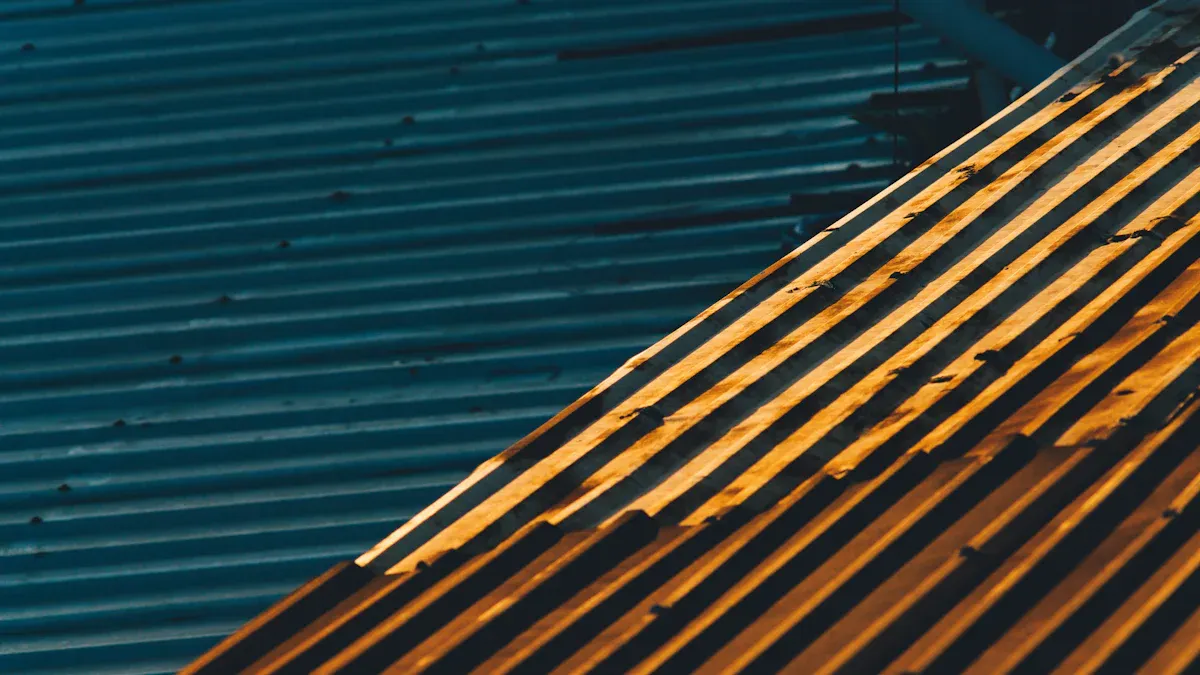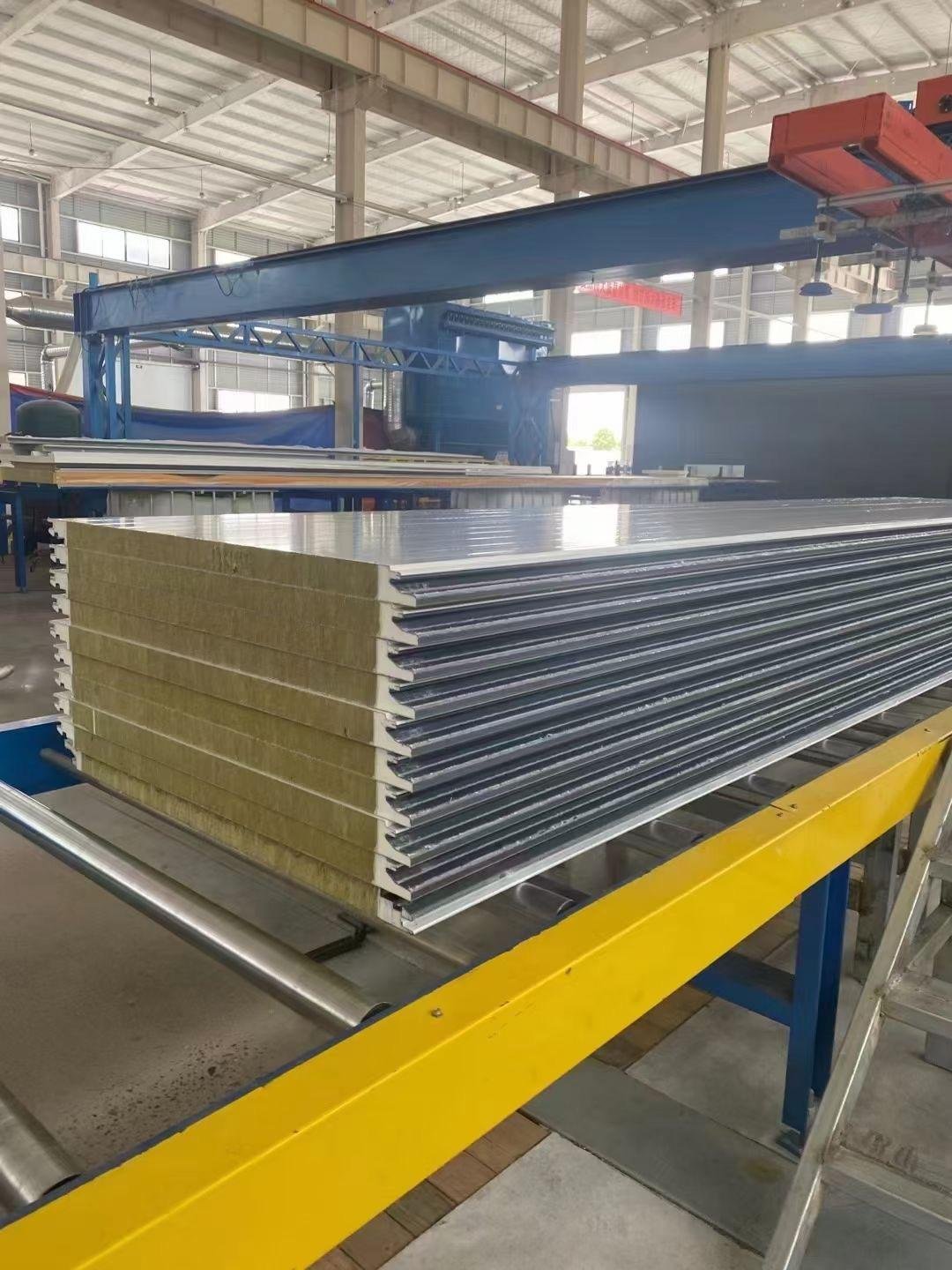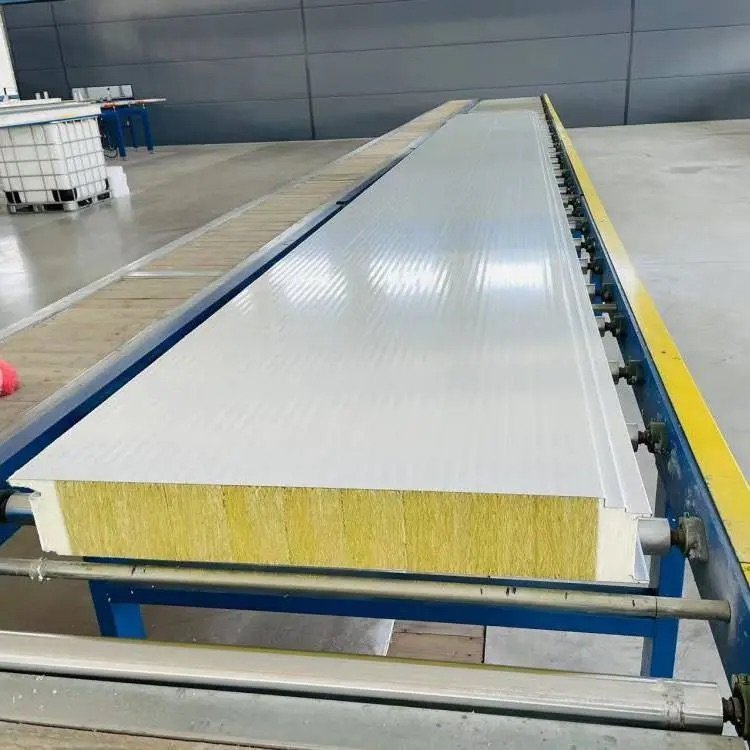
Wind load resistance means a building can handle wind pressure. For factories, this is important for safety and strength. Roof sandwich panels help manage wind forces well. ASCE 7-16 rules explain how to calculate wind pressure and loads. Tests show buildings can handle 2.4 times their planned wind load. This equals wind speeds up to 145 mph. Strong roof panels make buildings tougher and safer in bad weather.
Key Takeaways
Wind load resistance is important to keep buildings safe from strong winds.
Roof sandwich panels are light but strong, spreading wind pressure evenly for safety.
Installing roof panels correctly is key; experts make sure they are secure and safe.
Using good materials and checking local wind info makes buildings stronger.
Checking and fixing roof panels often helps them last longer and stay protective.
Wind Load Resistance: Meaning and Why It Matters
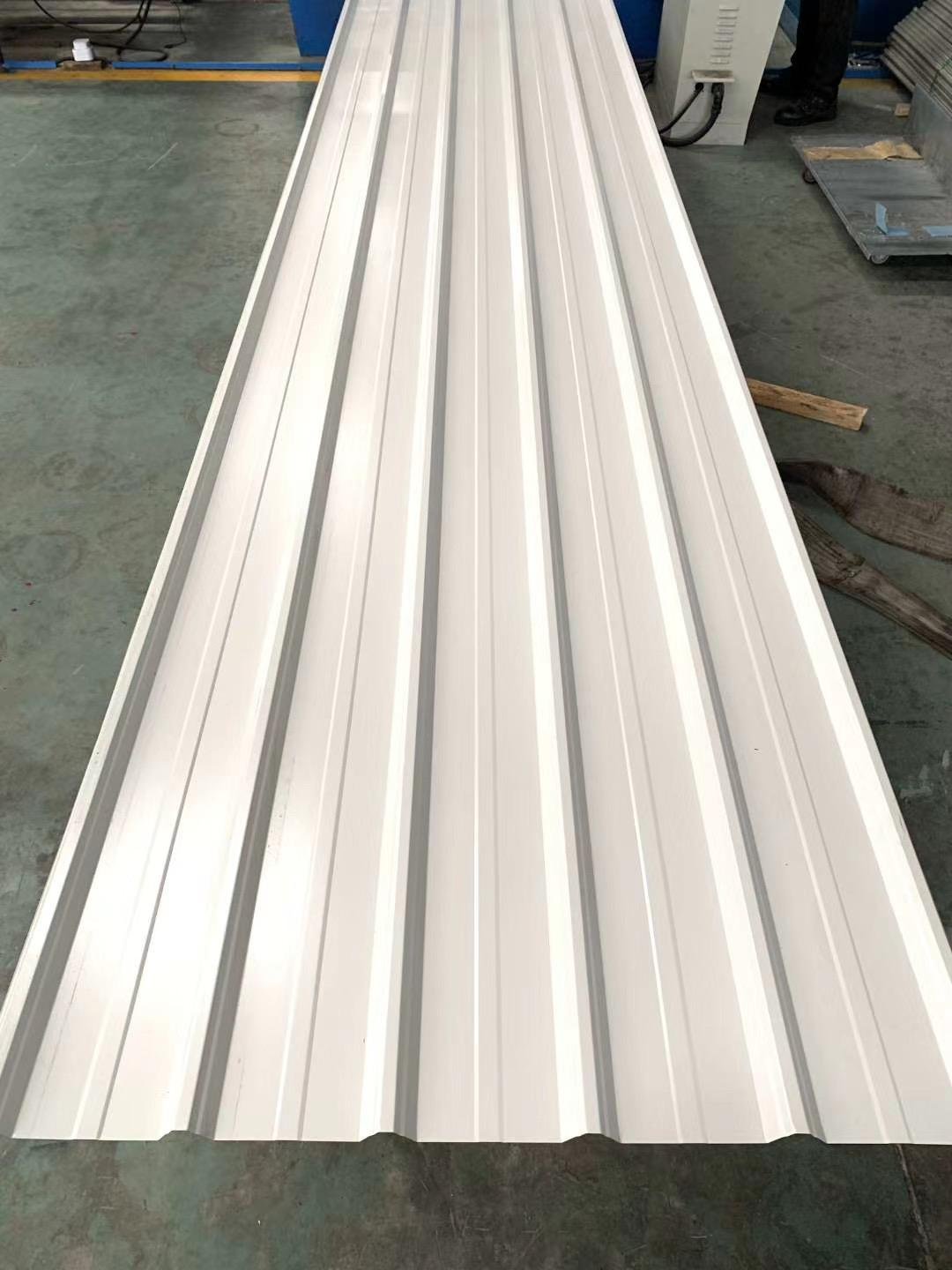
What does wind load resistance mean?
Wind load resistance is how well a building handles wind pressure. When wind blows on a building, it pushes on the walls, roof, and other parts. If the building isn’t built for this, it can get damaged. Think of wind load resistance as a shield that keeps the building safe from wind forces.
For industrial buildings, wind load resistance is even more important. These buildings often have big, flat roofs and wide walls. These parts are more likely to be affected by strong winds. Without good resistance, the building could get damaged, costing a lot to fix or even causing it to fail.
Why do industrial buildings need wind load resistance?
Industrial buildings are large and serve special purposes. Strong winds can stop work, harm equipment, and put workers in danger. Wind load resistance keeps the building safe and helps avoid delays.
Studies show why designing for wind resistance is so important. For example:
Wind-focused designs help predict problems and check building strength.
They also make buildings tougher and help them recover after storms.
Evidence Type | What It Means |
|---|---|
Design Guidelines | Clear rules for wind design ensure safe and strong buildings. |
Load Resistance Criteria | Adding wind resistance rules to plans keeps buildings secure. |
By learning these ideas, you’ll see how wind load resistance keeps industrial buildings safe and working well.
How roof sandwich panels help with wind load resistance
Roof sandwich panels are key to better wind load resistance. These panels have a strong core between two outer layers. This makes them light but very strong. They spread wind pressure evenly, lowering the chance of damage.
These panels can handle strong winds while staying sturdy. They are also simple to install and take care of, making them a smart choice for factories. Their strength lasts a long time, even in places with bad weather.
Using good roof sandwich panels can make your building much safer and better at handling wind. This keeps everyone inside protected.
Key Factors Influencing Wind Load Resistance
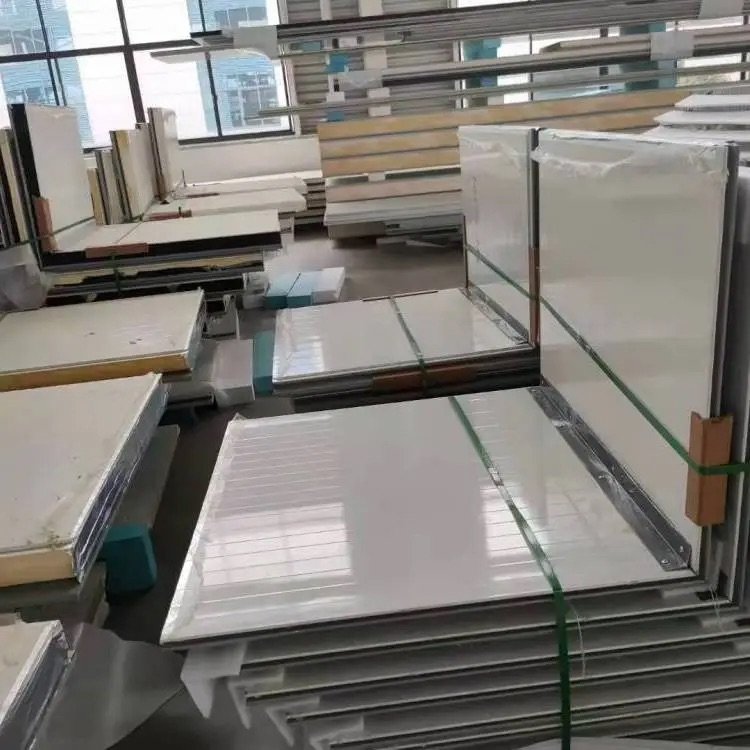
How panel design and shape affect wind resistance
The way roof sandwich panels are made and shaped matters a lot. Panels with steeper angles or special shapes can handle wind better. This helps lower the pressure on the roof and reduces damage risks. For instance, a steep roof lets wind move over it easily. This stops high-pressure spots from forming.
The shape of the panels also impacts their strength. Panels with strong edges or locking designs spread wind pressure evenly. This avoids weak areas and makes the roof stronger overall.
Tip: Pick roof panels tested for wind resistance. These designs help your building stay safe during strong winds.
Why core and outer materials are important
The materials in roof sandwich panels decide how well they handle wind. A strong core, like polyurethane or mineral wool, gives good support and insulation. Tough outer layers, such as aluminum or steel, protect against outside forces.
Outer layers with special coatings also boost wind resistance. These coatings stop rust and keep the panels strong for years. Research shows that using top-quality materials makes roofs last longer against wind damage.
Key Material Features to Look For:
Strong but lightweight core materials.
Outer layers with rust-proof coatings.
Materials that suit local weather.
Testing for wind pressure is very important too. It checks how much wind a roof can handle safely. This helps you pick materials that protect your building for a long time.
Why proper installation matters
Even great panels won’t work if installed poorly. Good installation keeps panels secure during strong winds. Strong screws and clips hold panels tightly to the roof. Sealing methods stop air and water from getting in, which could weaken the roof.
A real-life example from a hurricane area shows this well. Engineers used special methods to attach panels to handle strong winds. This kept the roof safe during big storms, protecting the building and people inside.
Knowing modern wind design rules, like ASCE 7, is also key. These rules help choose and install roof systems to handle wind pressure. Following them ensures your roof is safe and works well in tough weather.
Note: Always hire skilled professionals for installation. Their knowledge ensures your roof is safe and follows building rules.
How environment and location affect wind resistance.
The environment and location of a building greatly impact how well its roof handles wind. These factors must be considered during design and construction to ensure safety.
Location and Wind Speeds
Where your building is located affects the wind it faces. Coastal areas often have stronger winds than places farther inland. Buildings in open fields face more wind pressure than those in cities with other buildings nearby. Knowing local wind patterns helps you pick the best materials and designs for your roof panels.
Things to think about for location:
Coastal areas need panels that resist stronger winds.
City buildings need designs for wind turbulence from nearby structures.
Open areas need tougher panels for direct wind exposure.
Land Shape and Wind Movement
The shape of the land around your building changes how wind moves. Hills, valleys, and slopes can make wind stronger or weaker. For example, a building on a hill gets more wind than one in a valley. Checking these land features helps make sure your roof can handle the wind.
Tip: Use old wind records or local wind tests to see how land shapes affect wind. This helps you design a roof that stays strong in bad weather.
Why Good Data is Important
Having correct environmental data is key to planning for wind resistance. Rules like ASCE 7 give detailed wind speed and exposure data for different places. Using this data or local wind tests helps you make smart choices.
Why good data matters:
It ensures your roof follows safety rules.
It prevents overbuilding or underbuilding your roof.
It considers unique site conditions like wind direction and speed.
Preparing for Changing Weather
Climate change has caused more storms in many areas. This makes it even more important to think about the environment when designing roofs. Using strong roof panels and following modern wind resistance rules can protect your building from extreme weather.
Note: Update your building’s wind resistance plans often to match changing weather. This keeps your building safe and strong for years.
By thinking about these environmental and location factors, you can improve your building’s wind resistance. This protects your building and keeps everyone inside safe.
Testing Wind Load Resistance

Overview of testing standards and regulations
Testing rules make sure roof sandwich panels are safe and strong. These rules check how well panels handle wind and stay sturdy. Groups like ASTM International and Factory Mutual set these testing guidelines. They focus on wind resistance, fire safety, and durability.
Important standards for wind load testing include:
Standard/Code | What It Does |
|---|---|
Sets rules for roofing, including wind resistance. | |
ANSI/FM 4474 | Tests wind resistance using steady air pressure. |
UL 580 | Checks roof strength against wind uplift. |
UL 1897 | Measures roof resistance to air pressure. |
ASCE 72 | Calculates wind pressure for roof designs. |
These rules help you pick panels that follow safety laws and work well in tough weather.
Common methods for testing roof sandwich panels
Tests check if roof panels can handle strong winds. Popular tests include:
Static Pressure Testing: Steady pressure is applied to see when panels fail.
Dynamic Pressure Testing: Changing air pressures test how panels handle real wind.
Uplift Resistance Testing: Tests like UL 580 check if panels stay attached to roofs.
These tests make sure panels meet wind resistance needs for factories.
Tip: Always check if panels passed these tests to ensure safety.
Ensuring compliance with building codes
Building codes make sure roof panels are safe and reliable. For example, the IRC includes insulated panel systems to ensure they work well. ICC ESR-4689 also proves panels meet earthquake and fire safety rules.
Evidence Type | What It Shows |
|---|---|
Insulated panels have been part of IRC rules since 2007. | |
Seismic Performance | ICC ESR-4689 meets earthquake safety rules for all zones. |
Fire Performance | ICC ESR-4689 includes fire-rated panels tested by ASTM E-119. |
Relevant Standards | ASTM standards check the strength and safety of insulated panels. |
Following these codes keeps your building safe and strong. Updated codes also help prepare for extreme weather.
Benefits of Roof Sandwich Panels in Industrial Buildings
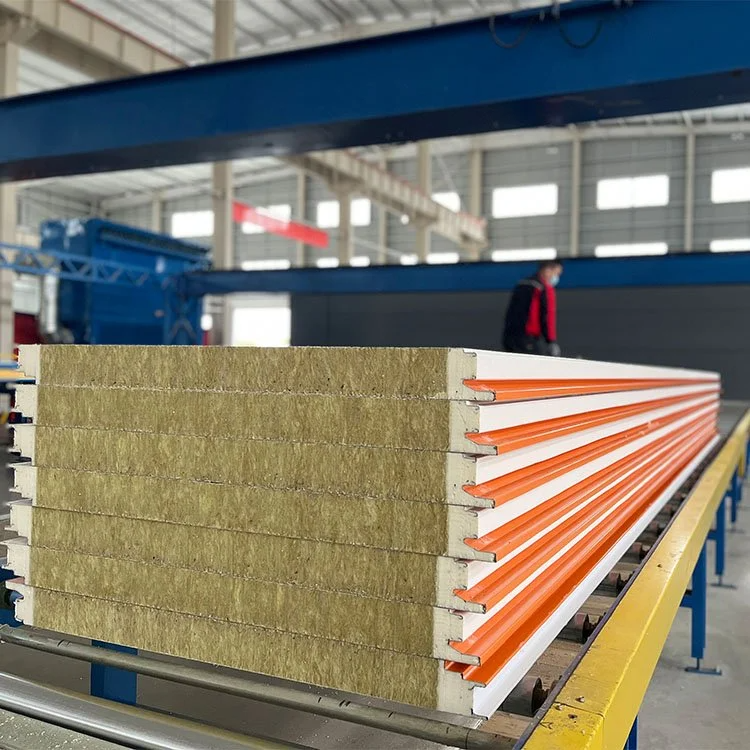
Durability and long-term performance
Roof sandwich panels are made to last a long time. They have a strong middle layer and tough outer layers. These features help them resist damage from bad weather like rain, snow, and strong winds. This keeps your building safe and working well for many years.
The materials used, like steel or aluminum, don’t rust easily. Special coatings on the outside protect them from rust and other damage. This means you won’t need to fix or replace them often, saving both time and money.
Tip: Pick panels with strong materials and good coatings for better durability.
Ease of installation and maintenance
Roof sandwich panels are easy and quick to install. They are pre-made, so workers can put them up faster than regular roofs. This lowers labor costs and ensures the roof is built well. You’ll get a safe and strong roof in less time.
Taking care of these panels is simple too. Their strong design and protective coatings mean they don’t need much maintenance. Cleaning them and checking them once in a while is usually enough to keep them in great shape.
Pre-made panels save time and improve quality, making them a top choice for factories.
Energy efficiency and insulation properties
Roof sandwich panels help save energy in buildings. They keep heat inside during winter and block it out in summer. This lowers the need for heating and cooling, cutting down energy bills.
They protect buildings from extreme weather.
Their lightweight design makes buildings safer and stronger.
They help save money on heating and cooling, which is great for eco-friendly projects.
More people are choosing insulated panels because they save energy. Metal panels are especially good because they are strong and keep heat in or out. By using these panels, you save money and help the environment.
Note: Energy-saving roof panels improve your building and help the planet.
Compliance with safety and building standards.
Roof sandwich panels must follow strict rules to work well. These rules keep buildings safe and protect the people inside.
Why compliance matters
Following safety codes helps roof panels handle tough weather. This includes strong winds, heavy snow, and very hot or cold temperatures. It also ensures the panels are fireproof, strong, and eco-friendly. Picking panels that meet these rules lowers risks and saves money on repairs.
Tip: Look for labels like UL, FM, or ICC when buying panels. These prove the panels meet safety rules.
Key standards for roof sandwich panels
Many groups create safety rules for roof panels. Here are some key ones:
ASCE 7: Explains how to calculate wind loads and keep roofs safe.
IBC (International Building Code): Covers general safety for buildings, including roofs.
FM Global Standards: Focuses on fire safety and wind resistance.
ASTM Standards: Tests how strong and fireproof materials are.
Standard | What It Ensures |
|---|---|
ASCE 7 | Wind load calculations and structural safety |
FM Global | Fire and wind resistance |
ASTM E-119 | Fire resistance of materials |
How to ensure compliance
To follow the rules, buy from trusted manufacturers and installers. Manufacturers give test reports and certifications for their products. Installers should follow the maker’s instructions and local building codes. Regular checks help keep everything safe over time.
Note: Breaking the rules can cause fines, legal trouble, or roof damage. Always choose certified products and experts for safety.
By following these rules, your roof panels will stay safe and strong for years.
Wind load resistance helps keep industrial buildings safe during storms. Roof sandwich panels are strong and shaped to handle wind well. Their design stops roofs from lifting or tearing apart. Picking good panels and installing them correctly makes them work better. Testing and following safety rules also help roofs stay strong in bad weather. By focusing on these steps, you can build a safer structure that protects people and property.
FAQ
What are roof sandwich panels made of?
Roof sandwich panels have three parts. The middle is a strong core, like polyurethane or mineral wool. The outer layers are usually steel or aluminum. This design makes them light, strong, and able to handle bad weather.
How do roof sandwich panels improve wind resistance?
These panels spread wind pressure evenly. Their strong core and tight installation stop damage during storms. Well-made panels also lower the chance of roofs lifting in strong winds.
Are roof sandwich panels suitable for all climates?
Yes, they work in many climates. They keep buildings warm in winter and cool in summer. Their tough materials also resist rust, making them great for coastal or wet areas.
How often should roof sandwich panels be inspected?
Check them at least once a year. Look for rust, damage, or wear after big storms. Regular checks keep them working well and lasting longer.
Can roof sandwich panels help reduce energy costs?
Yes! They keep heat inside in winter and block it in summer. This lowers heating and cooling needs, saving money on energy bills.
Tip: Pick panels tested for wind resistance and certified for safety to get the best results.


